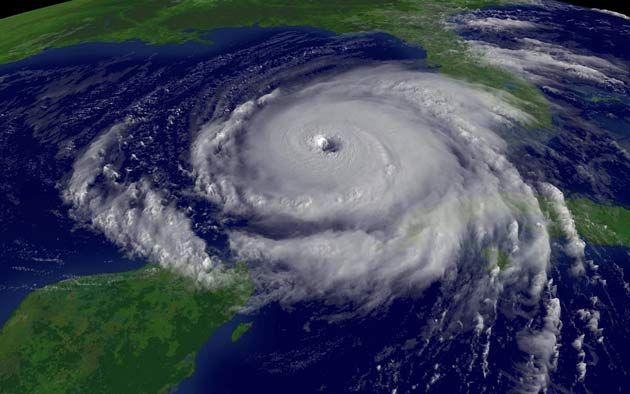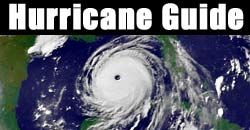Rita Could Stall and Dump 25 inches of Rain Inland

After Hurricane Rita makes landfall, it may stall out and dump unprecedented amounts of rain well inland, forecasters now say.
Ed Rappaport, Deputy Director of the National Hurricane Center, today called the potential for the storm to stall his No. 2 concern, after the more immediate threat of coastal devastation.
Rita could dump up to 25 inches of rain on some inland locations, Rappaport said.
Major flooding could result, he said. Dallas is likely to be west of the worst of it.
Rita's path is guided by other major weather patterns, including an area of high pressure that's currently centered over northern Texas and Oklahoma.
Winds rotate clockwise around a high pressure system and counterclockwise around a hurricane. The inland high pressure system has been guiding Rita westward.
But now that high pressure area is sliding East. That is allowing Rita to take a turn to the North.
Sign up for the Live Science daily newsletter now
Get the world’s most fascinating discoveries delivered straight to your inbox.
In a few days, there won't be any strong weather patterns to direct Rita.
"After landfall, steering currents are expected to weaken and the cyclone could meander for a couple of days in the vicinity of northeastern Texas," according to a statement from the National Hurricane Center.
Hurricanes pick up moisture while over the ocean. The frenzy of spray created by strong winds increases the amount of moisture a hurricane gathers, and the warm moisture in turn fuels the storm.
Historically, forecasters have watched other hurricanes dawdle and stall as they come ashore.
Out in the ocean, the eye of a rare hurricane can even make a loop, crossing its own path as steering winds change or are absent. That happened with Hurricane Diana in 1984, off the eastern U.S. coast. In 1985 Elena moved East in the Gulf of Mexico and nearly came ashore on the west coast of Florida, then it looped across its own track and headed back to hit Alabama and Louisiana.
- Rita Update
- New Computer Model Predicts Rita's Path and Intensity
- Deadliest U.S. Hurricane Ever Hit Texas in 1900
- Hurricane Center May Run Out of Names
- Natural Disasters: Top 10 U.S. Threats
- 2005 Hurricane Guide

Deadliest, costliest, busiest months, worst states, plus this year's storm names and more.
The science of monster storms.
Robert is an independent health and science journalist and writer based in Phoenix, Arizona. He is a former editor-in-chief of Live Science with over 20 years of experience as a reporter and editor. He has worked on websites such as Space.com and Tom's Guide, and is a contributor on Medium, covering how we age and how to optimize the mind and body through time. He has a journalism degree from Humboldt State University in California.













